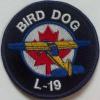Search the Community
Showing results for tags 'Fleet Air Arm'.
-
I recently bought the Air Britain Publications book 'The Harvard File' and this set my mind to understanding the variants used by the Fleet Air Arm. To help with this I also bought the Squadron/Signal ‘in action’ book for the T-6 Texan. I then looked at all my other reference material. I set out my findings below (they were in tables but they didn't survive the posting), which include points for discussion. I would also welcome any corrections. Not including the Harvards used by the RAF and other nations under the British Commonwealth Air Training Plan to provide advanced pilot training for new FAA pilots, there were three variants delivered to the FAA. These were the MK IIB, MK IIA and MK III. References to the rear canopy shape can be seen at http://i373.photobucket.com/albums/oo174/rcaf_100/harvardcanopy.jpg Harvard IIB Equivalent to: AT-6A (NA-77 ) / SNJ-3 (NA-78 ) Built by: Noorduyn Aviation Ltd. Canada Engine: 600 hp R-1340-AN-1-Wasp driving a Hamilton-Standard constant speed metal airscrew Equipment: British equipment such as instrumentation, radios and a circular RAF control column grip. 12 volt electrics. Canopy: The original longer fixed rear canopy end with a curved lower edge Other features: No tall antenna mast and delivered with extended exhaust shroud (which routed warm air into the cockpit) See http://www.aviationphotocompany.com/p390954246/h5ca0364e#h3e49e399 . Presumably cockpit heating wasn’t needed in Ceylon and the longer exhaust shroud was removed? Finish: Delivered in overall trainer yellow (most IIBs stayed in Canada). However the WWII photo of KF494 (see photographic references below) suggests the finish was changed to tropical silver/aluminium finish when in Ceylon and the post war photo of KF549 suggests that disruptive uppers were added to some used in the UK (although KF549 may be a red herring - see discussion section below). Post war photos of MKIIBs tend to be in trainer silver/aluminium with yellow bands and post war roundels. Weapons: Provision was made for a single .30 calibre machine gun in the starboard cowling (was it fitted to FAA aircraft?) Structure: Aluminium metal stressed skin and high alloy steel structure with fabric covered control surfaces. The main gear leg covers are often seen to be removed in post war photos Production: From serial number range: FE267– FH166 Total 11 (FE423, FE460, FE615, FE625, FE677, FE679, FE693, FE697, FE713, FE959 and FH155 - all but FE460 to Ceylon). From serial number range: FS661– FT460 Total 3 (FS685, FS696 and FT190 – all to Ceylon) From serial number range: FX198 – FX497 Total 2 (FX445 and FX447 – both to Ceylon) From serial number range: KF100 – KF999 Total 57 (KF493-KF495, KF499-KF528, KF530-KF537, KF542, KF544-KF546, KF548-KF559 – most to UK) Reference photographs: Air Britain: FAA Aircraft 1939-45 KF494 K7Y 729NAS Katukurunda 1945-46 WWII SEAC silver. No yellow bands evident Air Britain: FAA Aircraft Since 1946 KF500 203/ST 1831NAS Stretton 1951 trainer silver with yellow bands KF516 211/AC 1830NAS Abbotsinch 1949-53 trainer silver with yellow bands KF520 251/BR 1833NAS Bramcote 1952 trainer silver with yellow bands KF549 253/BR 1833NAS Bramcote 1952 trainer camou (TLS/yellow, possibly TSS?) KF537 252/BR 1833NAS Bramcote 1952 trainer silver. No yellow bands evident, but could be there Air Britain: The Harvard File KF558 206/CW 780NAS Culdrose 1949 trainer silver. Probably has yellow bands RNAS Culdrose 1947-2007 KF558 206/CW 780NAS Culdrose 1949 trainer silver. Yellow fuselage band discernible Profiles: Air Britain FAA Aircraft Since 1946 KF542 258/BR 1833NAS Bramcote 1949 trainer silver This erroneously has short MK IIA/III style rear canopy end. Scale Aircraft Modelling August 2005 KF494 K7Y 729NAS Katukurunda 1945-46 SEAC silver This profile has RAF style pale blue/roundel blue markings. I think this is erroneous (see discussion below) Discussion: The photo of KF520, KF549 and KF537 lined up at Bramcote (see above), throws up a couple of interesting questions. KF549 is clearly wearing disruptive camouflage but it seems to be of similar tonal value to the temperate sea scheme wearing Seafire in the background. Given that the aircraft belongs to a RNVR squadron, rather than a training one, could KF549 also be wearing TSS? If not, I assume it would have been in the standard green, brown, yellow trainer scheme? KF537 is in silver/aluminium finish, but has it yellow trainer bands? The placing of the aircraft’s serial number/ code number is further forward than usual (i.e. see KF520 lined up in the same photo) which is usually placed so the code number is within the trainer band, the usual position of which can be seen in the photo of EZ316 -/GJ http://www.aviationphotocompany.com/p390954246/h5ca0364e#h5ca0364e and other post war photos of FAA machines. Interestingly, KF537’s predecessor (MK III, FT965) had its serial number and same code number placed in exactly the same further forward position and that definitely has the trainer band (see reference photos for MK IIIs below). Why would two different aircraft of the same unit and with the same code, have exactly the same unusual serial/code placement? According to Air Britain, FT965 would have left the squadron (1950) by the time the photo was taken (1952), so it can’t be a matter of mistaken identity. The wartime photo of KF494 (see above) gives an impression of a slightly darker centre to the roundel than the fuselage (suggesting the aircraft has RAF style SEAC pale blue/roundel blue markings). However I think this is because the shiny aluminium finish on which the roundel is placed is more reflective than the slightly flatter roundel paint. The fin flash certainly appears to be a standard FAA white/blue one. Harvard IIA Equivalent to: AT-6C / SNJ-4 (NA-88) Built by: North American Engine: 600 hp R-1340-AN-1-Wasp driving a Hamilton-Standard constant speed metal airscrew Equipment: British equipment such as instrumentation, radios and a circular RAF control column grip. 12 volt electrics But 5 SNJ-4s (KE305-KE309) were delivered with American equipment and RN serials. They stayed in the USA. Canopy: Shorter rear canopy end with a straight 45 lower edge. For gunnery trainers, this was attached to the rear cockpit canopy at the bottom front corner, designed to hinge so it would rotate back over the rear occupant’s head and act as a windscreen when the rear cockpit canopy was pushed forward. However I understand the FAA used swordfish for gunnery training, so the short rear canopy end was fixed to the fuselage in FAA machines. Other features: Short exhaust shroud. Finish: Delivered in natural metal finish, directly to Ceylon, S Africa and India. Some later shipped to UK in 1946. Weapons: Provision for a single .30 calibre machine gun in the starboard cowling. Provision for an additional .30 calibre machine gun in the starboard wing, underwing bomb racks (were guns fitted to FAA aircraft?) Structure: Initially aluminium metal stressed skin and high alloy steel structure with fabric covered control surfaces but about halfway through the production run, this variant was redesigned to reduce the use of aluminium alloy and high alloy steel, the short supply of which was feared and therefore its use to be prioritised for combat types. The wings, centre section, fin, rudder, elevators, ailerons, flaps etc. were made of spot welded low alloy steel structures. Side panels of the forward fuselage and the entire rear fuselage and tailplane were covered with three-ply mahogany plywood rear fuselage skinning, as well as wooden bulkheads, floor portions, control columns, stringers and other components, with fabric control surfaces. Production: From serial number range: EX100 – EX846 Total 9 (EX641/EX702 to Ceylon, EX643/EX647/EX683/EX687 to S Africa, EX585, EX609 and EX620 to India). Some (EX620/ EX643/EX647/EX683/EX687 later shipped to UK in 1946 North American SNJ-4 under Acquisition No. BAC/n-1990 for the Royal Navy Serial Numbers: KE305 – KE309 Total 5 (all stayed in the USA) Reference photographs: None Profiles: None Discussion: It is not known whether the FAA airframes were early (all metal) or late (part wooden) examples, since there are no photos of them that I know of. Photos of SNJ-4s show the shorter rear canopy end with a straight 45 lower edge. Harvard III Equivalent to: AT-6D / SNJ-5 (NA-88) Built by: North American Engine: 600 hp R-1340-AN-1-Wasp driving a Hamilton-Standard constant speed metal airscrew Equipment: The majority had British equipment such as instrumentation, radios and a circular RAF control column grip. But 20 AT-6Ds were delivered with American equipment and RN serials. 24 volt electrics. Canopy: Shorter rear canopy end with a straight 45 lower edge. Other features: Short exhaust shroud. Finish: Delivered in silver/natural metal finish. Some re-finished in green/brown/yellow camouflage when in the UK (see photos of EZ400 and EZ447), although some appear to have retained their silver finish throughout their career (see photo of EZ406) – unless painted yellow overall. Post war photos of MKIIIs tend to be in trainer silver/aluminium with yellow bands and post war roundels. The main gear leg covers are often removed in post war photos Weapons: Provision for a single .30 calibre machine gun in the starboard cowling. Provision for an additional .30 calibre machine gun in the starboard wing, underwing bomb racks (were guns fitted to FAA aircraft?) Structure: Early examples had the wooden components of the late production AT-6Cs, but production soon reverted to the metal stressed skin and high alloy steel structure with fabric covered control surfaces of AT-6A/Bs and early production AT-6Cs. Production: From serial number range: EX847 – EZ458 Total 129 (most to UK) Serial Numbers: FT955-FT974 Total 20 (all to the UK) Reference photographs: Air Britain: FAA Aircraft Since 1946 EZ348 911/HF Stn Flt Hal Far 1947-52 WWII trainer silver Air Britain: The Harvard File FT965 252/BR 1833NAS Bramcote 1949 trainer silver EZ316 -/GJ Stn Flt Gosport 1953 trainer silver EZ400 900/CW Stn Flt Culdrose 1947-48 WWII trainer camou EZ406 Y2Z 759NAS Yeovilton 1947 WWII trainer silver or yellow & tall mast EZ447 Y2M 700NAS Yeovilton 1946 WWII trainer camou & tall mast Military Aviation in Malta 1915-1993 – John Hamlin EZ436 913/HF Stn Flt Hal Far 1947-52 silver Culdrose 1947-2007 EZ400 900/CW 790NAS Culdrose 1947 trainer camou - tonal difference between colours is clear so TLS/yellow. No tall mast Profiles: Air Britain: The Harvard File FT965 252/BR 1833NAS Bramcote 1949 trainer silver Erroneously has long MK IIB canopy end Military Aircraft Markings and Profiles – Barry Wheeler EZ316 203/JA “Hatters Castle” 1831NAS Stretton 1947 WII trainer camou Erroneously called a MK IIB of 1832NAS Air Britain: Squadrons of the Fleet Air Arm FT965 252/BR 1833NAS Bramcote 1949 trainer silver Erroneously called a MK IIB Discussion: With regard to the 20 AT-6Ds delivered with American equipment, the batch of 20 airframes FT955-FT974, which were all delivered to the UK, would seem to be the likely candidates. However at least some from serial number range: EX847 – EZ458 (see photos of EZ406, EZ400 and EZ447), had the tall aerial mast as per American aircraft, which implies the fitting of American radios. So perhaps the 20 AT-6Ds came from the earlier batch? The photo of EZ406 and an unidentified airframe in front of it on HMS Vengeance travelling to Malta in 1947, shows an allover light scheme. Probably silver but as previously with 759NAS at Yeovilton, what chance they were re-sprayed all over yellow? Anyone seen a reference photo for EZ316 (203/JA “Hatters Castle”)? NB - Edited to make more readable in absence of table format
-
On 20.11.1941 Lt P N Charlton flying Hawker Hurricane I (Trop.) W9327 OL*W of the Royal Navy Desert Fighter Flight intercepted and destroyed three Ju87s. Later in the same flight Charlton was hot down by a 'friendly' Tomahawk, later awarded DFC by RAF. This is my representation of Charlton Hurricane. I must thank and both @Beard and @tonyot for their help with the general appearance of this aircraft. Kit is the Airfix 1/48 Hurricane MkI(Trop.) boxing, paint is Xtracrylics, decals came from the kit or from Xtradecal generic set, the Squadron codes were sprayed using templates I made. I hope you like these rather cruel photographs.. On the shelf with Sea Hurricanes and a Martlet MkII Thanks for looking in..
- 20 replies
-
- 47
-

-

-
- FAA
- Royal Navy
-
(and 1 more)
Tagged with:
-
And so the big Airfix Hellcat is finished. This is the build story.... The journey started in late June 2019, and with a 9 month interruption, it is done. It isn't perfect but it pleases me: very light weathering, some fading on the upper surfaces. It is probably what a WWII carrier aircraft looked like. It is big, and it is heavy. The problem is "what do I do with it?" From the front three quater perspective, with the nose fully buttoned up, the Hellcat exudes an air of brutality! This is my favourite photograph! And with the cowlings removed the massive engine is exposed.... Now from above... And from the front....it is all about the weapons....! And talking of the weapon load this is a close up. The bombs and rockets are British, not the US ordnance supplied in the kit. There is more on this topic in the Work in Progress thread. Apologies for the blob of BluTac, it holds the lower cowl panels in position! So, there we are.... Comments, criticism and suggestions are appreciated, it is the only way to learn Now on to finish the 1/24 Harrier FGR3 build started in 1972.....(I think)
-
No, not the Marvel film, but the final stages of WW2 and a nod to VE Day - this is the FROG Grumman Avenger, first released 47 years ago, in 1973. This was a 1974 issue, and the decals are original, for Fleet Air Arm 857 Sqn of the British Pacific Fleet, embarked in HMS INDOMITABLE. It is very similar to the Academy kit, albeit with raised panel lines instead of engraved. Mine had warped somewhat in the box, particularly the starboard wing; I managed to fix it reasonably well, but the wings seem to have more dihedral than I think they should. Whether this is the result of my fix, or the rather vague wing root joints, or perhaps a feature of the original kit, I'm not sure. The markings are a little suspect as the fuselage roundel is a smaller version (they did change) and it still carries the Eastern Fleet tail flash. Perhaps it reflects the early days of the BPF. Nevertheless, this is a reasonable kit that builds relatively easily, albeit that some planning ahead is needed in places and confirms that if you want a quick modelling fix, the older FROGs are still worth building! And with my Academy build from a few years back.
- 9 replies
-
- 40
-

-
- BPF
- Grumman Avenger
-
(and 1 more)
Tagged with:
-
Good day to you all from glorious Nova Scotia! Hope you are all doing well. This is my latest release, built as part of the Corsair GB which finished last month. Although I did manage to get it up in the gallery, it wasn't 100% finished so here she is in her (technically!!) finished glory. This is the Tamiya 1:32 Birdcage kit, done up as a Fleet Air Arm Corsair Mk I JT190 of 1837 NAS, based on the Eastern board of the US. This particular aircraft belonged to Squadron CO and Fighter Ace Lt Cdr Jackie Sewell DSC RNVR. Ultimately the aircraft claimed his life during a training flight when he collided with his Senior Pilot S Lt David Watson RNVR in JT198 over Yarmouth, Maine. Both pilots lost their lives and they both now lie at rest at the Military Cemetery in Portsmouth, New Hampshire. The kit was built more or less from the box, I added some fabric harnesses as they looked better than Tamiyas steel versions which aren't very flexible. I also added some cockpit stencils to add a bit of realism and interest to the standard cockpit. Points to note on the aircraft. JT190 didn't have clipped wings as it was a US based training aircraft, it also retained US harnesses and didn't have the rear view windows common in most Birdcage Corsairs. The aircraft is displayed having been pushed back for maintenance hence the tail wheel is meant to be reversed! The engine is a thing of beauty and really should be displayed so left the cowlings removeable. I added some ignition harnesses to the engine from wire. The insignia markings are painted, which was a great journey of discovery! The Royal Navy JT190 was from Xtradecal and I used the kit stencils. The internal paints were Mig Ammo, external were Vallejo for the sky, Model Master Gunship Grey from the EDSG and my own mix of Olive and Green for the Slate Grey. I used very fine thread for the aerials (if you can see them!). I think the weathering is slightly heavy but I am claiming artistic license for that! I also took liberties with the flaps which by rights should be stowed and the cowling flaps are closed where they should be open but the detail looked too complex and time consuming for this build! All that is remaining is the tape for the gun ports and also on the nose cowling there should be some sealing tape but I couldn't decipher the exact layout so left this out This kit was a truly wonderful build, the parts just fell together and the joins were nice and tight. In fact id anything didn't fit right it was down to me not fixing it in properly! If you want to follow along the build the link is below. Now the pics! JT190 in glorious technicolour (with a backward tailwheel!) And finally the Lt Cdr Jackie Sewell who inspired this build, RIP. Bob
-
My 1/72 Phantom lockdown phasination is phinally over with the completion of my naval pair: Last to complete are my two RN Phantoms, one from 892 Sqn (ARK ROYAL) and one from 767 Sqn (RNAS Yeovilton). Both of these are Fujimi kits, pretty much "out the box" (except for the aircrew). The 767 one was a rebuild and tidy of a kit built just over 30 years ago, the 892 one is new: I have two of the new Airfix kits in the stash, but whilst I love the build options, I'm really less than convinced about the deep toy-like panel lines and prefer this set of kits by a very long way; if and when I build the Airfix ones, the panel lines will have to go. These are my usual finishing technique - hairy brush applied thinned Humbrol enamels, a Klear coat to help decalling, a light oily wash in the seams/engravings, then Windsor & Newton acrylic matt varnish to complete. The Fujimi kit is generally an easy build. As with all Phantom kits, you need to take care with the intakes and the wing to fuselage joints. Some preparation and care will avoid most problems. the newer kit was the upgraded mould with additional parts - e.g. air brakes and re-positioned auxiliary intakes - its wing halves didn't fit together quite as snugly as the RAF FGR.2 that I did last month, but they do fit with a little force. Please excuse the missing pitots on this one - they were there right up until I added the nav -lights! aaaargh.... Not quite worked out how to remedy this yet. The 767 yellow bird decal is somewhat smaller than the Airfix kit; I think Airfix have got it right here. The Royal Navy titles are also suspect - they are much larger than Airfix (& Italeri), but seem to match relative positions on the fuselage - perhaps the badly positioned auxiliary intake is confusing here, or perhaps letter size changed during service? and finally, a group shot of the whole "haunting" set together (numbers count etc....) ! Enough phantoms for now - a Buccaneer (HERMES - 801 Sqn) is nearly ready for decalling! FredT
-
Here are two new "lockdown" builds, both Fireflies, but in the opposite colour schemes from normal: Firefly FR.1, 766 Naval Air Sqn, RNAS Lossiemouth 1949 (FROG/Novo with own decals). Firefly Mk.IV, 814 Naval Air Sqn, HMS VENGEANCE, 1949 (Airfix, with own decals and Airwaves wing fold) Enjoy and stay safe everyone! FredT
-
Hi all. I'm new to this community and this is only my second thread, the first being on the intros section, but thought I'd jump straight in with a completed build. I was half way through this when I joined up and the build was being documented elsewehere and I thought I'd post here for your amusement and / or pleasure. Hope you like it. If I can get to grips with this photo hosting I'll see if I can't share a build or two.
- 8 replies
-
- 26
-

-
- Royal Navy
- fleet air arm
-
(and 1 more)
Tagged with:
-
I thought I would paste up one of my latest finished models - de Havilland Mosquito Mk XIII HK422/RO*Z 29 Squadron RAF. During the period Oct 1943 to Oct 1944 Lieutenant DRO Price RNVR with his Observer Sub. Lieutenant B Armitage RNVR were seconded to 29 Sqn RAF to learn the art of AI and Night Fighting. During that period Price and Armitage made three claims. 09/10. 06.44 Ju188 Destroyed 21/22.04.44 Me110 Destroyed 17/18.09.44 Me110 Destroyed Unfortunately 29 Sqn RAF only recorded in the Operations Record Book that, on each occasion, they were flying a MkXIII Mosquito rather than aircraft codes or serials. HK422/RO*Z is a representative aircraft of 29 Sqn through the period rather than one definitely flown by Price & Armitage. The model itself has been converted from the bulk standard Tamiya 1/48 MkVI/NFII boxing but with the addition of the Blackbird Nose, which I had a bit of trouble fitting (measure twice, cut once). I also scratch built the new junction boxes in the rear cockpit and scratched a GEE set (and aerial) plus Harnesses to Pilot & Observer. Paints are Xtracrylic over Halfords Grey Primer (honestly not much different to Med Sea Grey). Roundels were Tamiya Squadron codes I printed up myself. I need to thank both @Seahawk & @Graham Boak for their help and guidance during the research for this aircraft..
-
Just completed:- Grumman Martlet MkIV FN112/Ø7*D 888 NAS HMS Formidable Operation Torch Nov.1942 Following up on my slowly growing Fleet Air Arm Aces Collection I needed a Martlet IV to represent that flown by Lieutenant DM Jeram during Operation Torch. Dennis Jeram made two claims in this aircraft:- 06.11.42 Bloch 175 Destroyed 09.11.42 Ju88 Shared Destroyed (Italian Markings with a German Crew). The model is the 1/48 Tamiya F4F-4. I converted the Twin Wasp engine to a Wright Cyclone, by removing all of the cylinders and replacing with 9 cylinders in a single bank. Added the ignition cables for the engine, replaced the propeller with a Hamilton standard cut down from a Corsair. Shortened the cord of the cowling and lengthened the fuselage (less complicated than it sounds). Opened up the flaps and built a structure inside. Pilot from an Airfix Hurricane (and I remembered to cut away the floor so the pilot can see through the lower fuselage windows). Paint is Xtracrylix, Decals are Printscale. The real thing for comparison.. I hope you like it and thanks for stopping by...
-
I need some help identifying a 29 Squadron RAF Mosquito Mk XIII particularly the serial number and aircraft code. The particular aircraft I am trying to identify was involved in the destruction of an Me110 Night Fighter some time after 2300hrs 17.09.44. in the Arnhem area. The aircraft was flown by Lieutenant D Price with Sub Lieutenant R Armitage as his AI operator who had been seconded to the RAF to learn Airbourne Interception and bring the learnings back to the Fleet Air Arm to develop their Night Fighting capability. The Me110 was their final claim and the third aircraft they destroyed (two other damaged claims had been made) making them the top scoring night fighting team in the Fleet Air Arm. I have looked at the 29 Squadron ORB both Summary and Detailed and all it tells you is that aircraft type (Mosquito XIII with Mk VIII A.I.). The 29 Squadron Combat Reports don't help either, although there is a narrative of each patrol all it gives is the aircraft type as above. My last hope is Lieutenant Price's Log Book but an internet search has revealed nothing so far. I have seen some pictures of 29 Squadron aircraft - which bear the squadron letters RO. I assume that the colour scheme would be standard intruder scheme with Night undersides and by September 44 at partial invasion stripes.. Any information would be great fully received, or if you know of the whereabouts of any source of information that could lead me to the identity of this aircraft or aircraft assigned to 29 Squadron at the time it will be greatfully recieved... Many thanks in advance..
- 23 replies
-
- DH Mosquito
- Fleet Air Arm
-
(and 1 more)
Tagged with:
-
The Royal Australian Navy operated Wirraway trainers from HMAS Albatross, Nowra from 1948 through the 1950's. This is the Special Hobby "First Blood over Rabaul" kit with the "Boring Old Silver" decal set from Red Roo Models. It's basically out of the box apart from scratch-built undercarriage doors (the originals being rather thick). This is my first completed model in well over a year.
- 10 replies
-
- 19
-

-
- 1/72
- Special Hobby
-
(and 1 more)
Tagged with:
-
Hi all, I'm in the process of building an Academy 1/72 F4U-1 modified to a Fleet Air Arm Corsair Mk.II operating in the Pacific theater and I was wondering about the colour of the wheel wells. Was it the regular US interior green colour or was it Sky like the underside? - Cam
-
The new Airfix Sea Fury arrived today, First impressions: very clean moulding with good engraved and raised detail no flash and a lot of clever use of separate ejector pin sprue bits to minimise ejector pin marks from small parts. The markings are limited, one from HMS Glory during the Korean War for which there are a lot of optional loads, including a RATO unit to go under the fuselage, plus rockets, bombs and auxiliary tanks of various sizes. There is one that looks like a tank, but the front is cut flat, does anyone know what it is? The instructions are devoid of explanation! The second set of markings are of the RNAS Historical Aircraft Flight aircraft VR930 in the colours she wore during service with 802 NAS in Northern Ireland. For this kit Airfix offer NO underwing load suggestions. This may be correct for the display aircraft, but surely not for the period in service. Can anyone suggest what would have been a typical underwing load for training flights at that time? A couple of fuel tanks, perhaps plus training RPs or bombs? Any advice most welcome...
- 45 replies
-
- 1
-

-
- Fleet Air Arm
- Airfix
-
(and 1 more)
Tagged with:
-
No 888 Naval Air Squadron HMS Formidable November 1942 Here's one I finished last year. It's the Airfix Grumman Martlet Mk IV in 1/72 scale. This is a great little kit which I would recommend to anyone interested in FAA subjects. Construction was fairly straightforward although the undercarriage is very fragile and easily broken. Other than that there were no major problems although I lost a painted and decalled wheel to the CM and was clearing a space on the shelf of shame when I found it quite by chance on the floor of the children's bedroom. It was built OOB except for the seat harness which was either Eduard etch from the spares box or made out of masking tape, I can't remember which! It was painted using Humbrol enamels for the Beige Green and EDSG thinned with white spirit while the Dark Slate Grey was Humbrol acrylic thinned with water. Paints were sprayed using a Harder & Steinbeck Evolution and went on very nicely. Here are a few photos for your enjoment. As usual, all comments are welcome.
- 20 replies
-
- 40
-

-
- MARTLET
- FLEET AIR ARM
-
(and 1 more)
Tagged with:
-
I am (very slowly) building a collection of the aircraft of various Royal Navy Aces (based on the Osprey book). This model represents Vought Corsair MkII JT537/P136. 1836 NAS, HMS Victorious, Operation Iceberg May 1945. On 4th May 1945 SLt DJ Sheppard (RCN) used this aircraft to destroy a D4Y Judy. SLt DJ Sheppard was the first Royal Canadian Navy Ace of WWII. The kit is the Tamiya F4U-1D kit. Throw it in the air and it assembles itself, except it has the rather excellent MCD MkII conversion set with new cockpit sidewalls, seat with harness, CO vents and external tank. TTS uses Xtracrylix paints. Markings are made up from various Xtradecal sets. I chose this aeroplane for my collection rather than the usual T8*B in which Sheppard scored the majority of his victories as I already have a Corsair in the Blue/White roundel (Lt Col R Hay) and I wanted a Corsair with the BFP Roundel and Bars. Anyway enough of the chat... Here is P147 onboard USS Essex for comparison... And in the cabinet... Hope you like it and thanks for stopping by...
- 21 replies
-
- 39
-

-

-
- Pacific Fleet
- Fleet Air Arm
-
(and 1 more)
Tagged with:
-
Seafire F.46 - RNAS Lossiemouth Station Flight, 1948 Scratch conversion of Airfix 1/72 Spitfire Mk.22 - Model Alliance Markings I'm still immobile and broken at this end, so modelling on a coffee table next to my sofa whilst my bones heal! However, that's no excuse, so this month I have tried something a little more adventurous. The Seafire 46 is essentially a navalised Spit 22, so a relatively easy conversion in this scale and this is exactly what Airfix did with their 1/48 kit (same markings too!). The contra-rotating prop was scratched up from the kit spinner, suitably extended and thinned by a blob of Milliput, plus a spare blade from another kit. Shaping it, then drilling holes for the blades was a fairly major challenge under the circumstances, so it is a little rough, but I'm pleased to have managed at all. Likewise, the tail-hook will require some more work when I am back on my feet again and can fabricate an actual hook. Decals come from a Model Alliance set for the Lossie CO (Capt Caspar John RN)'s personal mount, which was, by all accounts, maintained to gleaming Captain's rounds standard. Brush painted as always, with Humbrol Enamels, a light oily wash and Klear topcoats (and I went for a half black/half green cockpit option FWIW). With thanks to Mrs T, who is doing a lot of the basics for me at the moment, but happily did a lot of extra fetching and carrying for me from my model room to my coffee table! FredT
- 12 replies
-
- 39
-

-
- Fleet Air Arm
- Airfix
-
(and 1 more)
Tagged with:
-
I have been a member of the forum since the year dot and believe it or not I have never taken part in a Group Build. Group builds are risky for me due to the glacial pace at which I build but I've decided to risk it and join the build but what to build. Two possibilities spring straight to mind which fit in with my current "Aces of the FAA" theme. Airfix 1/48 Sea Hurricane. Which will be finished as 800 NAS Sea Hurricane Ib Z4550/G aboard HMS Indomitable Op. Pedestal 12.08.42. This aircraft was flown by Lt Cdr JM Bruen and has a couple of victories to its name. Eduard 1/48 Hellcat I. To be finished as 800 NAS JV132/E*F HMS Emperor Op. Hoops(?) Norway 08.05.44 when Lt B Ritchie destroyed a FW190. I asked on the Group Chat and got a "build the Hellcat" and "build both" so I have decided to go with the build both option with the proviso that if I'm running short of time one will be prioritised over the other.. so so here we go.... The box content (with additional artwork cover the markings that they will be finished in) Hurricane primed with the gun covers removed and the Instrument panel painted and decalled. Hellcat I (Weekend edition) primed, cockpit sides painted and cockpiit quite well advanced.. Who decided to open the cowl flaps? Thanks for stopping by...
-
Although it fills the last remaining gap in my Seafire collection http://www.gengriz.co.uk/RNPropsweb/seafire.htm , this month's kit really tested my patience. Whilst the end result is quite pleasing, this really wasn't an enjoyable build. This is the Czech Master Resins Seafire F.45, a kit for which I had very high expectations, but which proved to be a spectacularly difficult build. In fact it was nearly abandoned on several occasions. My problem was that I really couldn't get the resin parts to adhere to each other, despite using different types and batches of superglue. In the end I used Araldite as a last result for some parts, which worked. However, as a result of multiple gluing attempts, including flooding some parts with superglue, I did lose some of the detail and by the end I just wanted to finish. The kit had a few small issues too - the separate fuselage parts were not identical sizes and the resin seemed to flake when sanded. I was still partly bed-ridden for much of the build, which didn't help frustration levels. Much thanks to Mrs T for going by bus into town on a search for replacement superglue mid-build! ... And here she is with last month's Seafire 46. Once I can climb ladders again and reach their stowage boxes in the loft, I will do some shots of all 14 of my Seafire builds together! FredT
-
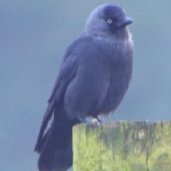
1/48 Seafire XV, 1946, 806 Sqn (Hobbycraft)
mahavelona posted a topic in Work in Progress - Aircraft
Welcome to my first WIP on the forum. I'm a student modeller who's been modelling for much of my life but haven't done much forum posting. My general modelling philosophy is 'cheap and cheerful'. Although I think it's fun to make a model as accurate as possible, I can leave super detailing to those who can afford the expensive kits and PE sets whilst I chug along with whatever cheap plastic is available. This subject is a kit I picked up for just £8 recently in Halifax Modellers World. With so many of the model shops of my childhood now closed it was lovely to find such a great shop open and busy on my visit to the city. The Hobbycraft kit was cheap for a reason. The recessed panel lines and overall fit seem OK, but throughout, detail is a little soft. The decals are completely unusable; they're completely out of register and are extremely limited anyway. No stencils or details; just the basic insignia. So I've tracked down a scheme which I'll be able to reproduce without purchasing a decal sheet (remember my 'cheap' modelling philosophy - I'd rather spend the money on more kits!). I've turned up this rather handsome aircraft: These plans come from the rather more expensive Special Hobby kit of the same aircraft. I think it is rather handsome, and I have a soft spot for FAA subjects, having grown up visiting Yeovilton's Fleet Air Arm museum and its fantastic model show (RIP ). To recreate this scheme, I'm going to use a new tool for me - a circle cutter - to create masks to paint those roundels. I've got some appropriate numbers left on a decal sheet. I might also have a go at masking some stencil detailing, such as the black lines on the wings. So this whole project could go wrong quickly! Unfortunately, I actually sold a perfect set of decals for this aircraft on ebay 6 months ago, but I got almost enough to cover the costs of the kit for them, so hey ho. I'll post some pictures of the kit, and interior work so far, a little later in the day.- 5 replies
-
- 5
-

-
- Seafire XV
- 1/48
-
(and 1 more)
Tagged with:
-
All fingers legs arms and toes crossed here that this coming week brings this particular model subject much closer to reality; subject to wind and tide, we should see a Royal Navy Aircraft Carrier back at sea for the first time in many years, ready for the first F-35B to land on later next year. These markings for 809 Sqn in HMS QUEEN ELIZABETH and HMS PRINCE OF WALES are largely from my own imagination and courtesy of my inkjet printer, but perhaps not that far from the truth. This is Fujimi's delightful 1/72 F-35B kit, with a little hacking about from me (e.g. the rather obvious auxiliary air inlet is missing on the kit) and my own decals. I haven't fitted any weapons in the open bays yet - but some scratch built Meteors and SPEAR 3s are on the workbench! For those who doubt that colour can ever be applied to these aircraft, check out the USN variants at sea now! And as a comparison, here she is alongside Italeri/Revell's old X-35B kit Edit - here is a link to my second build scheme and an update of this one post FoC Flying Trials: 2018 Updates FLY (ROYAL) NAVY ! FredT
- 21 replies
-
- 58
-

-
- Fleet Air Arm
- Royal Navy
-
(and 1 more)
Tagged with:
-
Please may I present to you my just completed 1/48 Special Hobby Blackburn Skua II. I have finished my Skua as the aeroplane of the Royal Navy's first "Ace" of WWII Lt WP Lucy RN of 803 NAS. Blackburn Skua II L2925/F of HMS Glorious flown by Lt Lucy was involved in operations off Norway during April and May 1940. Lt Lucy had been involved in the attacked that sunk the Konigsberg. He went on to share in the destruction of 7 enemy aircraft, 1 probably destroyed, 3 shared damaged. In L2925/F he shared in the destruction of 2 He.111s on 24.04.40 & 07.05.40 but was killed with his observed when the aeroplane exploded attacking a He.111 14.05.40. The kit was constructed out of the box (boxing comes with some resin elements and some etch). Paint is Xtracolour and Tamiya acrylic. Markings were cobbled together using various sets but mainly Xtradecal standard sheets. Anyway enough ramble, here is a couple of pictures.. Hope you like it. By the looks of the pictures I need more matt varnish on those tyres... Thanks for stopping by.. The Blackburn Skua was notable for a Royal Navy aircraft for the large number of ‘firsts’ she notched up in such a short career: First –monoplane in Royal Naval service; First –all-metal aircraft in Royal Naval service; First –British aircraft to shoot down a Confirmed German aircraft in the Second World War; First –aircraft in the world to sink a major warship by dive-bombing; First –British aircraft to have a bomb-ejector fork for bomb to clear propeller in dive; First –British aircraft with sleeve-valve engine; First –British aircraft to feature Koffman starter gun for engine; First –British aircraft to mount four Browning guns clear of prop. No CC gear; First –British aircraft to feature two-speed propeller (two pitch positions); First –and only aircraft to be fitted with anti-spin tail parachute; First –British aircraft equipped with radio-homing beacon on new VHF; First –British aircraft to have front gun reflector sight; First –British aircraft fitted with oxygen bottles and supply lines." Skua:-The Royal Navy's Dive-Bomber: The Royal Navy's Dive-Bomber" by Peter Smith
- 18 replies
-
- 35
-

-
- Fleet Air Arm
- FAA
-
(and 1 more)
Tagged with:
-
De Havilland DH.104 Sea Devon C Mk.20 - 718 Sqn Fleet Air Arm - Amodel 1/72 My attempt to build at least one of everything in Ray Sturtivant's Aircraft of the Fleet Air Arm takes another step forward with this relatively obscure aircraft. The RN's Sea Devons were ex-civil machines used as VIP and light transport aircraft, based out of RNAS Culdrose in Cornwall. Definitely a short run kit, this one is very nicely formed, but needs a little care in building. The cabin windows caused me a lot of angst, but it was worth it. FredT
- 20 replies
-
- 58
-

-
- 1/72
- Fleet Air Arm
-
(and 1 more)
Tagged with:

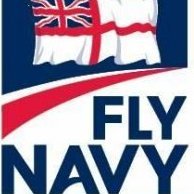


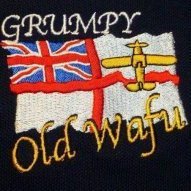
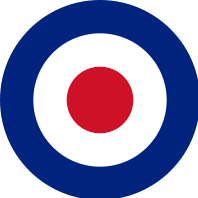
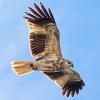
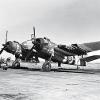
.thumb.jpg.7a01d8b1929350b9124abee30c008ca9.jpg)
